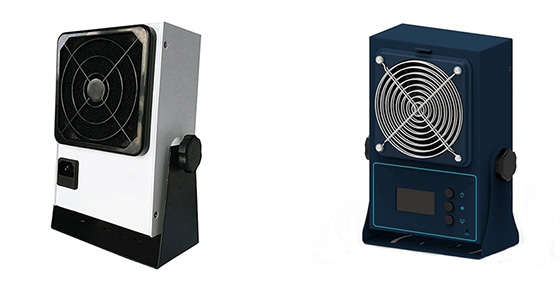How to Choose Static Eliminator?
There are rules that must be followed in static elimination. A thorough understanding of these principles is necessary to obtain the best performing equipment. The following will clarify some issues to consider when choosing static eliminator.

The Material Must be in Free Air
For example, if the film touches the roller, you can't neutralize the charge with a static eliminator at this point. This is the most common mistake in our industry. When a charged substance comes into contact with another object, the electric field couples with that object and cannot be neutralized. You have to wait until the material is separated from the body.
This also applies to 3D products such as molds. Flat molds that slide off chutes or conveyor belts cannot be neutralized. There may be some static eliminatiors, depending on the height of the product. The part that touches the chute will not be neutralized, the part furthest from the chute will be partially neutralized. Neutralization depends on the capacitance of the product.
A partial exception is pulsed DC static elimination device. Direct current ionization has a greater ability to neutralize charges with another body. This is because DC electricity can pass through objects, unlike AC. However, these are only partial exceptions, and the general rule still applies: the best product for neutralization is in free air. So, we recommend a minimum of 50mm between the point of contact with the roller and the neutralized position.
Dust and Static
It should be removed as soon as possible after electrostatic vacuuming. If a dusty mold is stored for several days, the electrostatic attraction can be replaced by molecular bonds. When this happens, the product cannot be cleaned by neutralizing static electricity and blowing off dust, and needs to be wiped with a damp cloth or solvent.
The lesson here is to neutralize the charge and remove the dust immediately after attracting. This is important in the injection molding industry, where the mold is painted. Neutralization may be required after forming and after flashing. If the plastic sheeting is lying flat on the table, you can't completely neutralize it. This means that when it is removed from the table, it may re-attract dust after cleaning.

